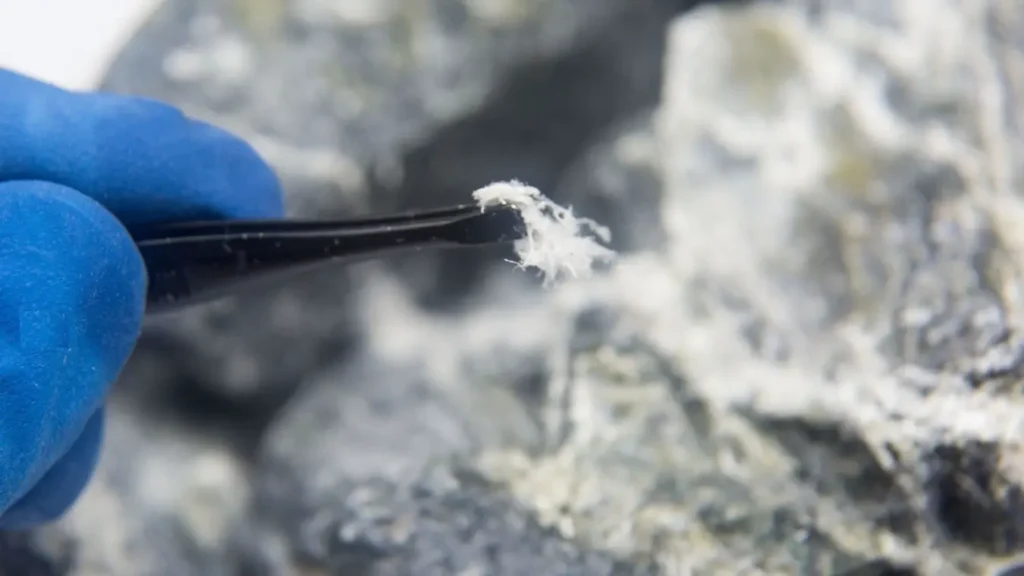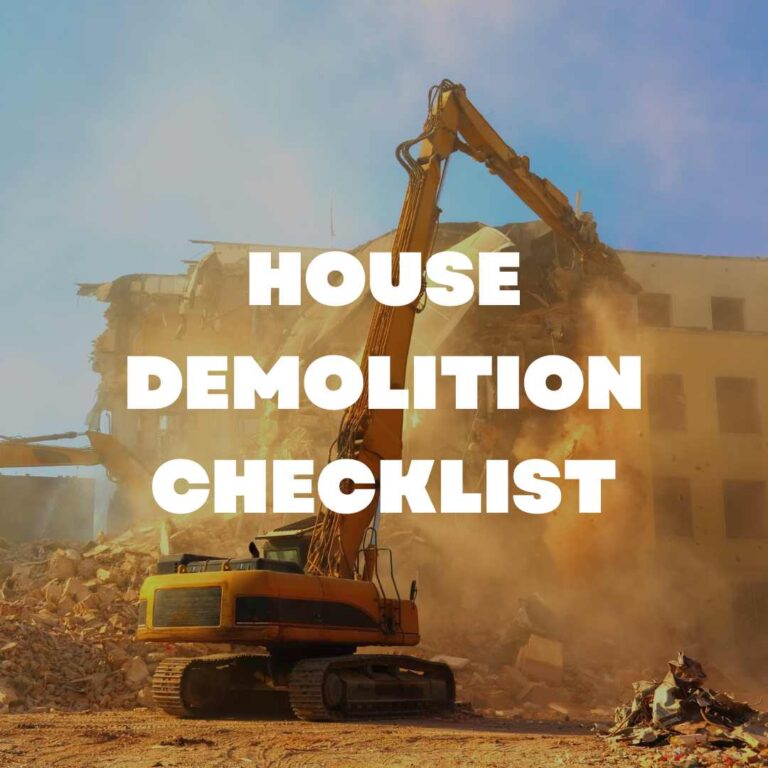Could your home contain hidden asbestos? If your property was built before the 1980s, there’s a strong chance asbestos-containing materials might be present.
For many Brisbane homeowners, asbestos exposure is a real concern. Whether you’re planning a renovation or considering demolishing your property, identifying asbestos is crucial. Asbestos can be dangerous if not handled correctly, so it’s vital to know the warning signs.
At Pro House Demolitions Brisbane, we’re here to ensure your project is safe and completed efficiently. In this article, we’ll guide you through the signs of asbestos, safety tips, and what you should do if asbestos is discovered in your home.
Table of Contents
ToggleWhat Is Asbestos?
Asbestos refers to a group of naturally occurring fibrous minerals that were once commonly used in building materials for their strength, heat resistance, and insulating properties. It was heavily used in Australian construction from the 1940s to the late 1980s.
However, when asbestos fibres are damaged or disturbed, they can become airborne and pose serious health risks. If you’re considering demolishing an older building in Brisbane, it’s essential to consult Pro House Demolitions Brisbane to assess any asbestos risks before starting your project.

Why is Asbestos Dangerous?
Asbestos fibres are invisible to the naked eye, but once released into the air, they can be inhaled and settle deep into the lungs. This exposure can lead to severe respiratory diseases, including asbestosis, lung cancer, and mesothelioma.
Asbestos-related illnesses often take decades to develop, making it vital to manage asbestos risks early, especially before any demolition or renovation work.
Does asbestos present a health risk?
Yes, asbestos is a major health hazard. If asbestos-containing materials are disturbed—whether during a renovation, demolition, or even regular wear and tear—fibres can be released into the air. These fibres are easily inhaled, leading to long-term health issues.
This is why asbestos is often referred to as a “silent killer,” as its effects may not be noticeable until decades later. For anyone in Brisbane planning demolition work, it’s critical to have a professional inspection to ensure asbestos isn’t present.
Signs Your Home May Have Asbestos
1. House Construction Date of 1980s or Earlier
If your home was built before the mid-1980s, it’s highly likely that asbestos-containing materials were used in some part of the construction. Whether it’s the insulation, roofing, or floor tiles, asbestos could be present.
2. Asbestos Roofing Sheets and Tiles
Asbestos cement sheets were widely used in roofing due to their fire-resistant properties. If your roof appears aged or damaged, it’s worth having it checked for asbestos before making any renovations or demolitions.
3. Asbestos Flooring Tiles
Older vinyl flooring tiles often contained asbestos. If these tiles crack or become worn, they can release harmful fibres into the air. Before any demolition work, it’s essential to have these tiles inspected and, if necessary, professionally removed by our team.
4. Asbestos Insulation
Asbestos was frequently used in insulation materials for walls, pipes, and attics. If your home’s insulation is dated or appears deteriorated, it’s possible asbestos is present.
5. Asbestos Ceiling Tiles and Contaminated Fixtures
Asbestos was often used in ceiling tiles from the 1950s to the 1980s. If your home has older ceiling tiles, it’s crucial to check for asbestos before any renovations.
Common Exposure Scenarios
1. Attic Renovation
Disturbing asbestos-containing insulation or roofing materials during attic renovations can expose you to asbestos. Before you start any work, have an inspection done to ensure your safety.
2. Brake Dust in Home Garage
Asbestos was used in automotive brake pads, and dust from older brakes can contaminate home garages. If you work on older cars in your garage, there may be a risk of asbestos exposure.
3. Drilling into Asbestos in Drywall
If you drill into walls made with asbestos-containing drywall, fibres can be released into the air. Before undertaking any home modifications, check the materials you’re working with.
4. Removing Vinyl Floor Tiles
Vinyl floor tiles installed before the 1990s often contained asbestos. These tiles can release fibres if broken or removed improperly, making professional inspection crucial.
5. Popcorn Ceiling Removal
Popcorn ceilings, popular in homes built from the 1950s through the 1980s, frequently contained asbestos. Removing these ceilings without proper precautions can lead to significant asbestos exposure.
6. Cutting Insulation on Pipes
Asbestos was commonly used to insulate pipes in older homes. Cutting into or disturbing this insulation can release asbestos into the air, so it’s important to handle such materials with care.
Common places where asbestos may be present in homes
When it comes to older homes, there are several areas that may contain asbestos without homeowners even realizing it. From roofing materials to wall insulation, various parts of your property may contain asbestos, posing potential health risks if disturbed. Let’s take a look at some of the most common places where asbestos might be lurking.
- Roofing (asbestos cement sheets)
- Wall insulation and drywalls
- Floor tiles and adhesives
- Ceiling tiles and textured coatings
- Pipe and plumbing insulation
- Sheds and external garages

What Can I Do About Asbestos in My Home?
If you suspect asbestos in your home, avoid disturbing the material. The best course of action is to consult a professional. At Pro House Demolitions Brisbane, we offer comprehensive asbestos assessment and removal services to ensure your property is safe. If asbestos is found, our team of experts will safely remove it, preparing your property for safe demolition or renovation.
How Can I Tell if a Material in My House Is Asbestos?
It’s difficult to visually identify asbestos, as it often looks like ordinary building materials. The safest option is to have a professional take samples for testing.
What Does Asbestos Look Like?
Asbestos can appear in a variety of forms, from a solid, cement-like material to fibrous insulation. Due to its widespread use in different building materials, it’s important to have a professional inspection if you suspect asbestos in any part of your home.
Asbestos Safety Dos and Don’ts
- Do contact professionals for any asbestos concerns.
- Don’t attempt to remove asbestos materials yourself.
- Do follow safety protocols if you suspect asbestos.
- Don’t disturb asbestos-containing materials
How Do I Get Tested for Possible Exposure to Asbestos?
If you believe you’ve been exposed to asbestos, seek medical advice promptly. A doctor may recommend tests such as a chest X-ray or lung function tests.
How Much Does Asbestos Testing Cost?
The cost of asbestos testing varies depending on the number of samples and the size of the property. Typically, it ranges between $200 and $500 for residential properties. For more informations check out our guide for asbestos removal cost.
What Happens if I Violate Asbestos Laws?
Handling or removing asbestos without proper training or permits can result in heavy fines and legal penalties. More importantly, it puts your health and the health of others at risk.
How to Remove Asbestos?
Removing asbestos from your home is not a task to be taken lightly. It’s critical to handle it safely and in compliance with local regulations. Disturbing asbestos-containing materials (ACMs) can release harmful fibres into the air, which can be dangerous if inhaled. Here’s a step-by-step guide on how to address asbestos removal safely and effectively.

1. Hire a Professional Asbestos Removalist
The safest way to remove asbestos is to hire a licensed professional. In Australia, asbestos removal is strictly regulated to ensure safety. Professionals, like those at Pro House Demolitions Brisbane, are trained to handle asbestos properly, ensuring it’s removed without endangering your health or violating any legal requirements. Attempting DIY asbestos removal without proper training can be risky and illegal.
2. Conduct an Asbestos Assessment
Before any removal begins, it’s essential to conduct a thorough asbestos inspection. A professional asbestos assessor can identify areas in your home that may contain asbestos, ensuring that every dangerous material is properly accounted for before any work begins.
3. Seal Off the Area
When asbestos is being removed, the area must be completely sealed off to prevent asbestos fibres from spreading to other parts of your home. This is especially important for indoor asbestos materials like ceiling tiles, insulation, or flooring. Licensed removalists will use plastic sheeting and negative air pressure systems to contain the fibres.
4. Safe Removal Techniques
Once the area is sealed, asbestos materials are carefully removed piece by piece. The goal is to minimise breakage, as damaged materials release more fibres. Professionals will wet down materials as they remove them, reducing the risk of airborne particles. Special tools and protective equipment, including full-body suits and respirators, are used to ensure safety.
5. Proper Disposal
Asbestos waste cannot simply be thrown out with the regular rubbish. After removal, it is carefully packaged and sealed in specific asbestos disposal bags, which are clearly labelled. These materials are then transported to a designated asbestos disposal facility, where they can be safely handled.
6. Clean-Up and Air Monitoring
After the asbestos has been removed, the area is thoroughly cleaned with specialised equipment, such as HEPA vacuums, to ensure that no fibres remain. Post-removal air monitoring may also be conducted to verify that the air is safe to breathe again. This final step is crucial to confirm that your home is free from any lingering asbestos contamination.
7. Get Certification
Once the asbestos removal is complete, ensure you receive a clearance certificate from the asbestos removalist. This document confirms that the asbestos has been safely removed and your home is no longer at risk. Keeping this documentation is important, especially if you plan to sell your property in the future, as buyers will often request proof of asbestos clearance.
Why Professional Asbestos Removal Is Important
Attempting to remove asbestos yourself can result in severe health risks, not only to you but also to your family and neighbours. Improper removal techniques can release dangerous asbestos fibres into the air, which are nearly impossible to clean up without specialised tools.
Conclusion
Asbestos can be a hidden danger in many older homes, but recognising the signs and taking the necessary precautions can protect your health.
If you’re planning a demolition or renovation project, working with professionals like Pro House Demolitions Brisbane is essential for managing asbestos safely. Our experienced team ensures your project is handled efficiently, on time, and within budget, while prioritising safety and environmental standards. Don’t risk asbestos exposure—let us help you make your property safe for the future.
People Also Ask
How does asbestos affect a home’s value?
Homes with asbestos may lose value due to the associated health risks and the costs involved in safe removal.
What happens during an asbestos test?
A professional collects samples from suspected areas, which are then tested in a lab for asbestos presence.
Should I have my home tested for asbestos?
If your home was built before the 1980s, it’s a good idea to have it inspected for asbestos, especially if you plan to renovate or demolish. Learn how to test for asbestos to ensure your home is safe.
Do home asbestos test kits work?
While they can provide some indication, professional asbestos testing services are far more reliable and accurate.




